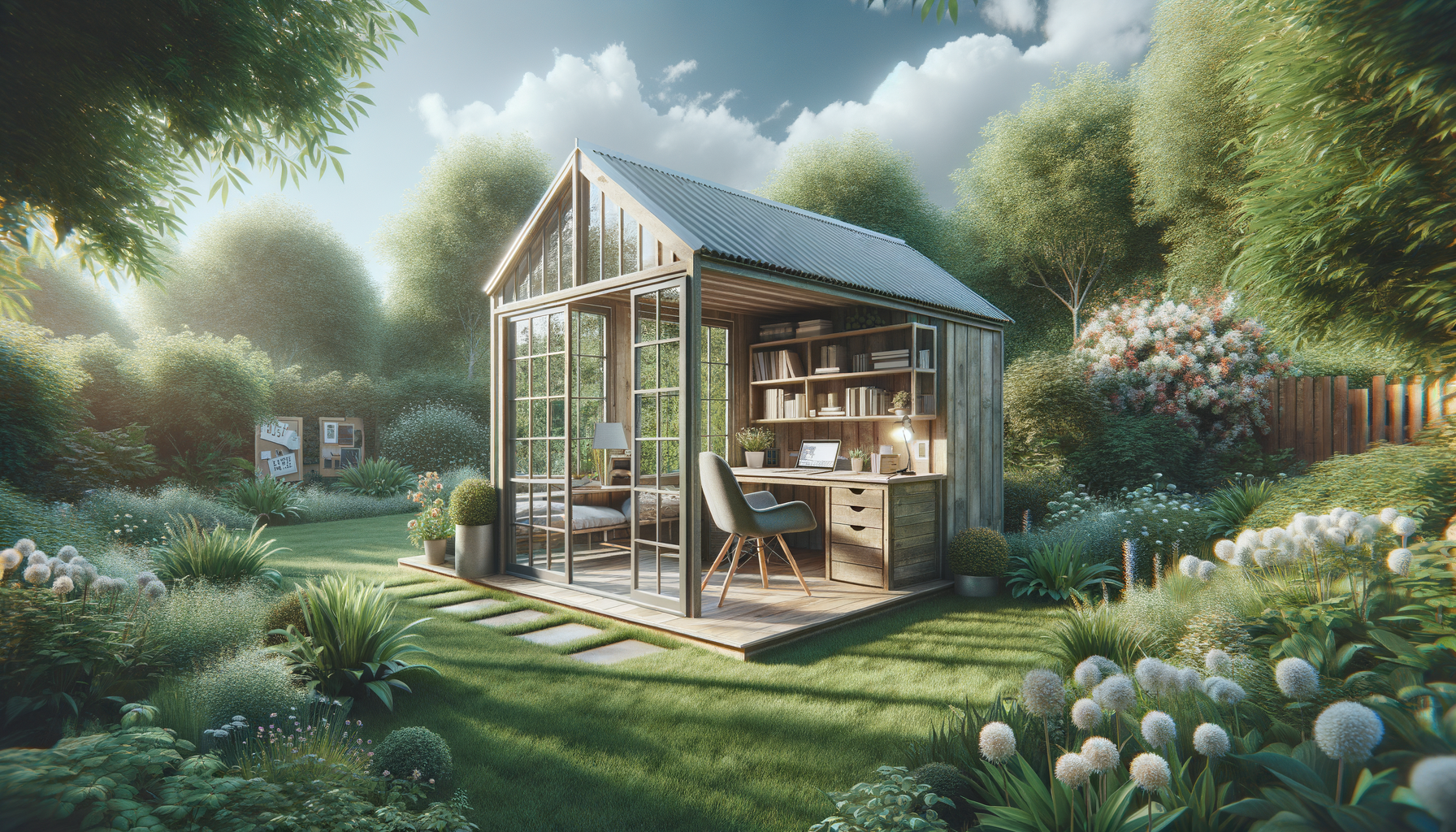Why Choose a Garden Office?
In recent years, the concept of a garden office has gained popularity as more individuals seek creative and efficient ways to enhance their work-life balance. A garden office offers a unique blend of privacy and tranquility, allowing professionals to separate their work environment from their home life. This separation not only boosts productivity but also enhances mental well-being.
Garden offices come with several benefits:
- Privacy: Being detached from the main living space, they offer a quiet environment free from household distractions.
- Customization: These spaces can be tailored to fit personal style and functional needs, from minimalist designs to more elaborate setups.
- Increased Property Value: Adding a garden office can enhance the appeal and value of your property.
With remote work becoming a more permanent fixture in many industries, the garden office stands out as a practical and aesthetically pleasing solution for those seeking a dedicated workspace.
Design and Construction Considerations
Designing and constructing a garden office involves several considerations to ensure it meets your specific needs and complements your garden landscape. The first step is selecting the right location. Ideally, the office should be positioned to maximize natural light while maintaining a level of privacy from the main house and neighboring properties.
Construction materials play a crucial role in determining the office’s durability and insulation. Common materials include wood, metal, and composite panels, each offering unique benefits. Wooden structures are renowned for their aesthetic appeal and natural insulation properties, while metal offers a sleek, modern look with robust durability.
When planning the interior, consider the following:
- Insulation: Proper insulation ensures a comfortable working environment year-round, reducing heating and cooling costs.
- Lighting: Incorporate ample windows and consider skylights for natural illumination, supplemented by energy-efficient LED lighting.
- Ventilation: Adequate ventilation is essential for air quality and temperature control.
Ultimately, the design should reflect personal preferences and professional requirements, creating a space that is both functional and inspiring.
Cost and Budgeting
The cost of a garden office can vary significantly based on size, materials, and additional features. On average, prices range from $3,000 to $20,000, with customizations and high-end materials pushing costs higher. When budgeting, it’s essential to factor in not only the initial construction costs but also ongoing maintenance and utility expenses.
Here are some cost components to consider:
- Foundation: A stable foundation is crucial, with options ranging from concrete slabs to screw piles, each affecting the overall cost.
- Utilities: Installing electricity, heating, and internet connectivity adds to the budget but is essential for a functional office.
- Permits: Depending on your location, building permits may be required, adding to the initial expense.
To manage costs effectively, prioritize essential features and consider phased upgrades as your budget allows. Investing in quality materials and construction will pay off in the long term, offering a durable and comfortable workspace.
Decor and Interior Design
Once the structural elements are in place, attention turns to interior design, which plays a pivotal role in creating an inviting and productive atmosphere. The design should reflect personal tastes while incorporating elements that enhance focus and creativity.
Consider the following interior design tips:
- Color Scheme: Choose calming colors like blues and greens to promote relaxation and concentration.
- Furniture: Ergonomic furniture is essential for comfort, while multifunctional pieces can maximize space efficiency.
- Storage Solutions: Incorporate shelves, cabinets, and organizers to keep the space tidy and free of clutter.
Personal touches, such as artwork, plants, and decorative items, can transform the office into a space that feels uniquely yours. Remember, the goal is to create a harmonious environment that supports both professional productivity and personal well-being.
Environmental and Sustainability Considerations
As environmental awareness grows, many individuals are opting for sustainable practices in their garden office projects. This approach not only reduces environmental impact but can also lead to long-term cost savings.
Sustainable considerations include:
- Eco-Friendly Materials: Use sustainably sourced wood or recycled materials to minimize environmental footprint.
- Energy Efficiency: Incorporate solar panels, energy-efficient windows, and LED lighting to reduce energy consumption.
- Water Management: Implement rainwater harvesting systems for garden irrigation and consider green roofing options.
By integrating these sustainable practices, you contribute to environmental conservation while creating a garden office that is both beautiful and responsible. This not only enhances your quality of life but also sets a positive example for others considering similar projects.



Leave a Reply